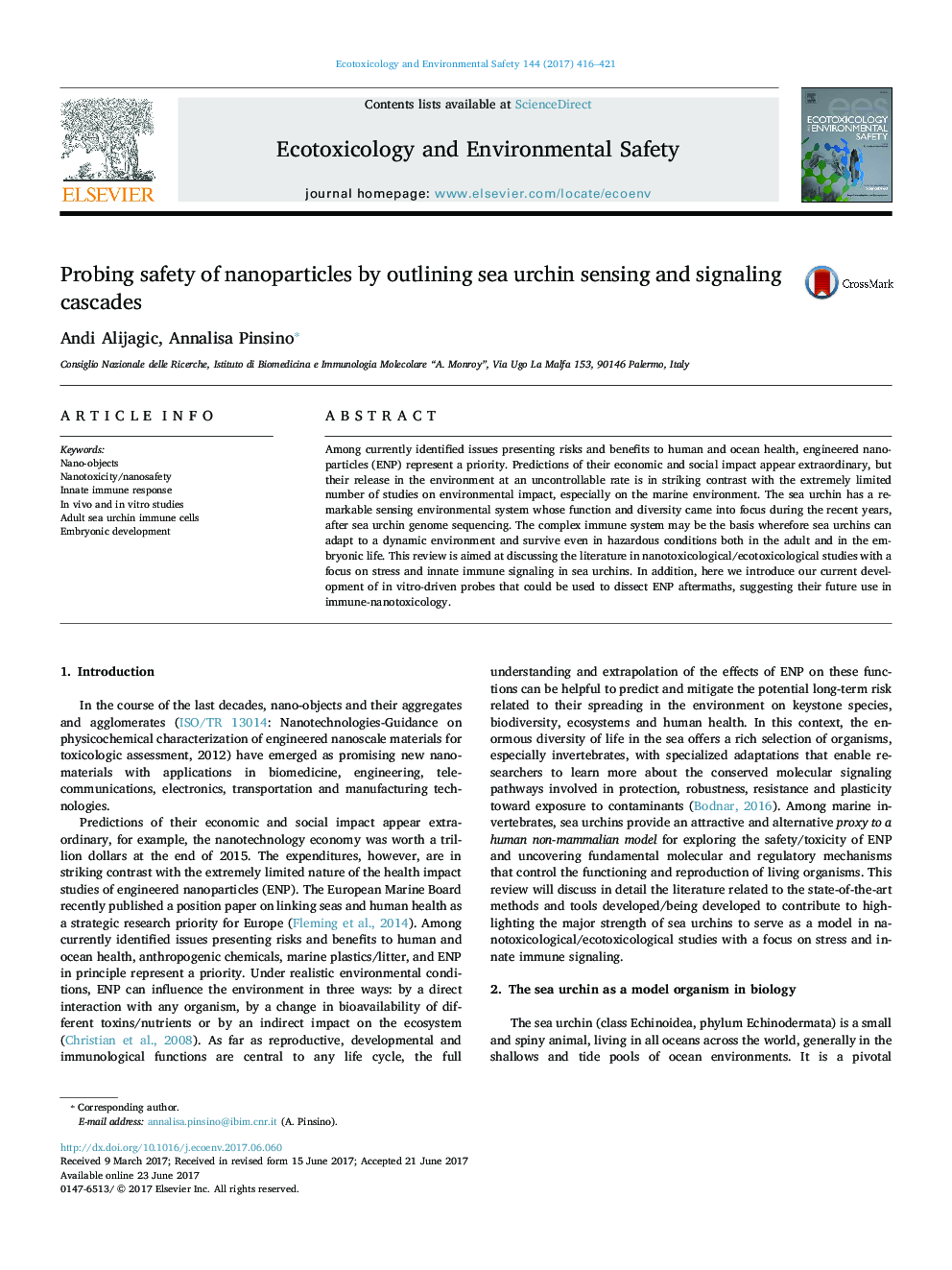| Article ID | Journal | Published Year | Pages | File Type |
|---|---|---|---|---|
| 5747490 | Ecotoxicology and Environmental Safety | 2017 | 6 Pages |
â¢Sea urchin in biology: impact in the field of development and immunology.â¢Sea urchin as a new potential probing model for ENP evaluation.â¢An overview of the publications highlighting the impact of ENP on the sea urchin.â¢Sea urchin signaling cascades: state of the art and future prospective.â¢Introducing in vitro approach for future ENP assessment at low chronic exposures.
Among currently identified issues presenting risks and benefits to human and ocean health, engineered nanoparticles (ENP) represent a priority. Predictions of their economic and social impact appear extraordinary, but their release in the environment at an uncontrollable rate is in striking contrast with the extremely limited number of studies on environmental impact, especially on the marine environment. The sea urchin has a remarkable sensing environmental system whose function and diversity came into focus during the recent years, after sea urchin genome sequencing. The complex immune system may be the basis wherefore sea urchins can adapt to a dynamic environment and survive even in hazardous conditions both in the adult and in the embryonic life. This review is aimed at discussing the literature in nanotoxicological/ecotoxicological studies with a focus on stress and innate immune signaling in sea urchins. In addition, here we introduce our current development of in vitro-driven probes that could be used to dissect ENP aftermaths, suggesting their future use in immune-nanotoxicology.
Graphical abstractDownload high-res image (260KB)Download full-size image
